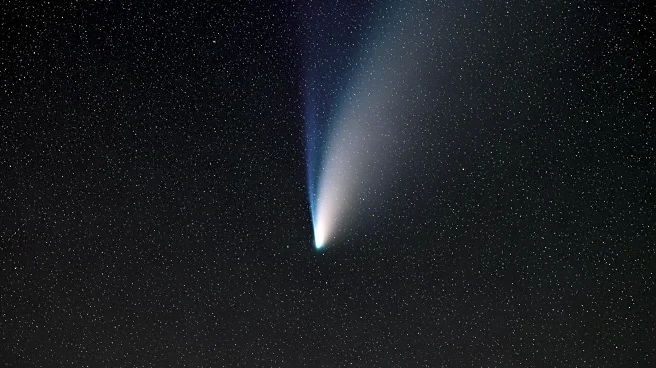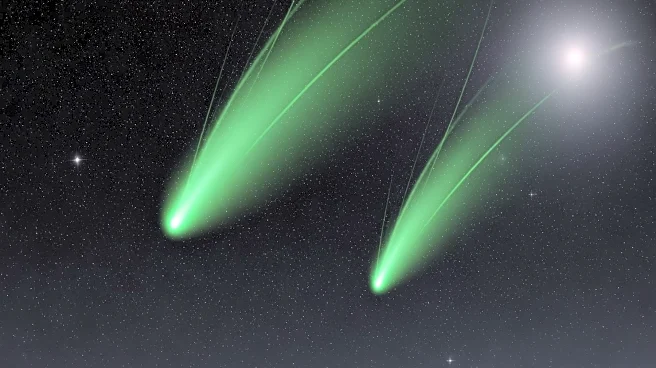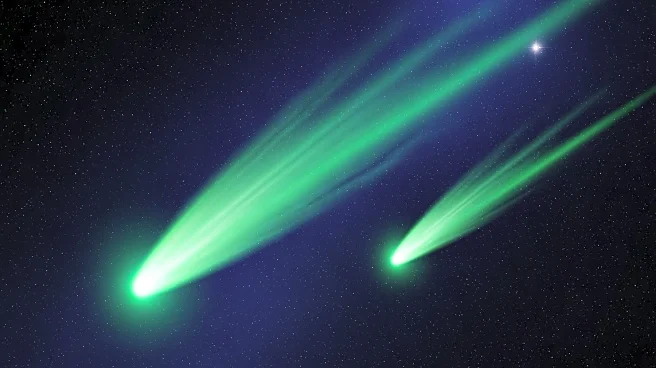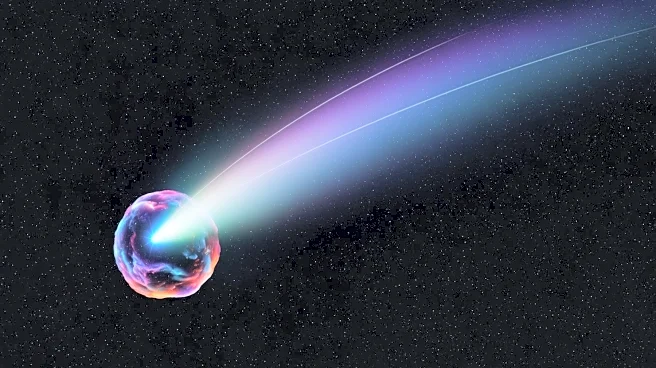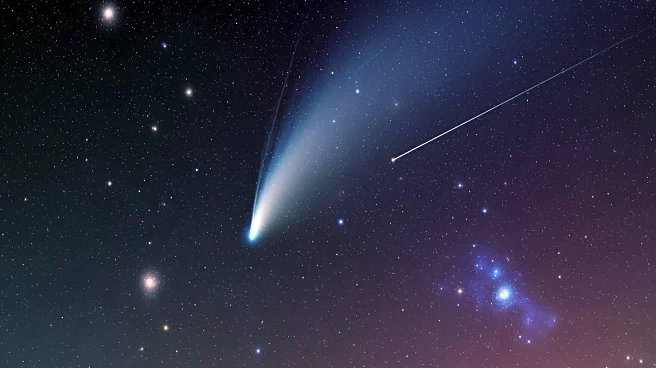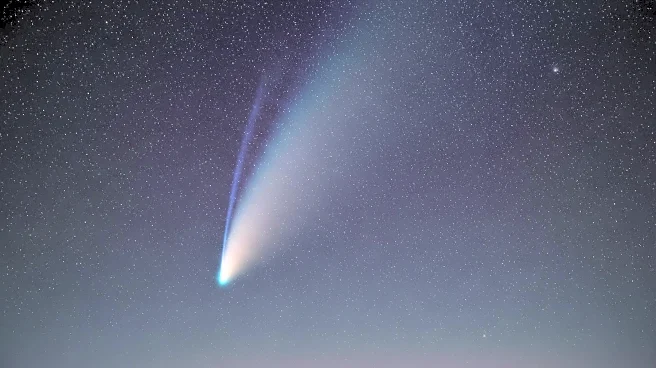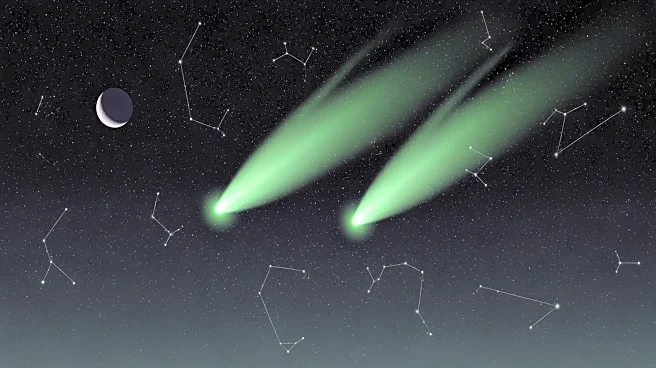What's Happening?
Comet Lemmon, officially designated as C/2025 A6, is set to make a close approach to Earth in late October 2025, providing a rare opportunity for skywatchers to observe this celestial event. Discovered
on January 3, 2025, the comet is traveling at speeds of up to 130,000 mph and is currently visible in the pre-dawn sky. It features a brilliant green coma and a long tail composed of gas and dust, with the green color resulting from diatomic carbon molecules emitting green light when broken apart by sunlight. The comet is believed to originate from the distant Oort Cloud. Experts suggest that the best time to view Comet Lemmon will be after October 21, when it will come within approximately 55.4 million miles of Earth. The optimal viewing period is from October 22 to 28, during the new moon, when the night sky is darkest. Observers are advised to look for the comet away from city lights, and while it may be visible to the naked eye, binoculars or a small telescope will enhance the view.
Why It's Important?
The appearance of Comet Lemmon is significant as it offers a once-in-a-lifetime opportunity for astronomers and enthusiasts to observe a celestial body that will not return for approximately 1,150 years. This event highlights the dynamic nature of our solar system and the ongoing exploration of its distant regions, such as the Oort Cloud. The comet's approach provides valuable data for scientists studying the composition and behavior of comets, contributing to our understanding of the solar system's formation and evolution. For the public, it serves as a reminder of the vastness and beauty of space, potentially inspiring interest in astronomy and science. The event also underscores the importance of preserving dark skies, free from light pollution, to enable such observations.
What's Next?
Following its closest approach to Earth, Comet Lemmon will continue its journey toward the Sun, reaching its closest point on November 8, 2025. During this time, the comet's icy nucleus will release more gas and dust, brightening its coma and tail. However, the Sun's glare will make it difficult to observe from Earth. After orbiting the Sun, Comet Lemmon will head back toward the outer solar system, eventually disappearing from view. This trajectory emphasizes the transient nature of cometary appearances and the importance of timely observation. Astronomers will continue to monitor the comet's path and behavior, potentially gaining insights into the characteristics of similar celestial bodies.
Beyond the Headlines
The appearance of Comet Lemmon invites reflection on the cultural and historical significance of comets, which have been observed and recorded by civilizations for centuries. Comets have often been associated with omens or significant events, influencing art, literature, and mythology. In modern times, they serve as a bridge between scientific inquiry and public fascination with space. The event also highlights the advancements in astronomical technology and techniques that allow for the detection and study of such distant objects, showcasing the progress in our ability to explore and understand the universe.
